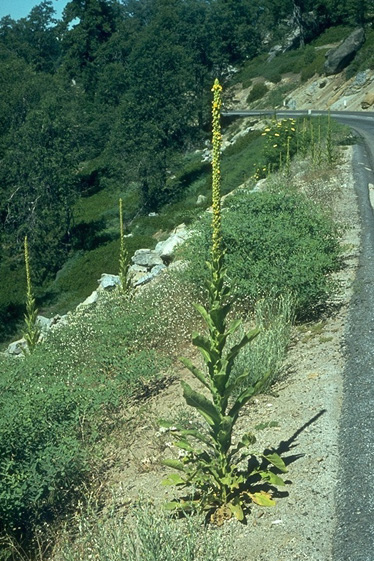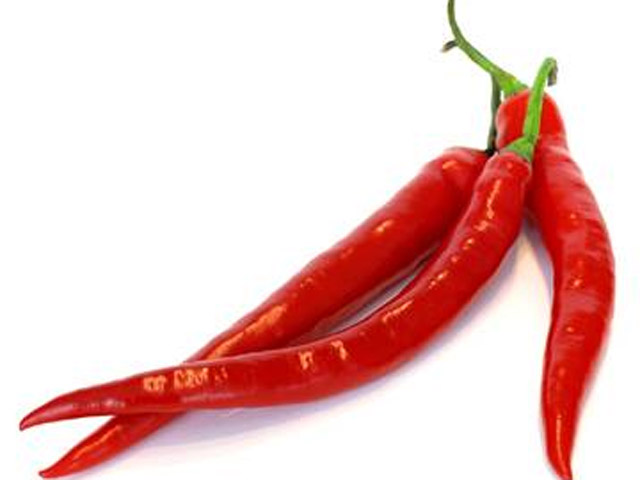|
Sterculia quadrifida - fruit - Paul Donatiu © 2002
http://www.drugs.com/npp/karaya-gum.html Botany
The majority of commercial karaya gum is obtained from Sterculia urens , which is a soft-wooded tree that grows to approximately 10 meters. It is native to India and Pakistan, where it is found on the dry, rocky hills and plateaus; it grows there almost exclusively, where it is cultivated for karaya production. 6 All parts of the tree exude a soft gum when injured. Karaya gum is produced by charring or scarring the tree trunk and removing a piece of bark or by drilling holes into the trunk. The gum seeps from the scars and is collected, washed, and dried. The gum is then graded. A mature tree may yield 1 to 5 kg of gum per season. 6 The flowers bloom from February to March, and the tree bears a star-shaped fruit. 3
History
Karaya gum has been used commercially for about 100 years. Its use became widespread during the early 20th century, when it was used as an adulterant or alternative for tragacanth gum. 6However, experience indicated that karaya possessed certain physiochemical properties that made it more useful than tragacanth; furthermore, karaya gum was less expensive. Traditionally, India is the largest producer and exporter of karaya gum. 6 Increasing amounts are exported by African countries. Currently the gum is used in a variety of products, including cosmetics, hair sprays, and lotions, to provide bulk. 7 The bark is astringent. 3
Chemistry
Karaya gum is a complex, partially acetylated polysaccharide obtained as a calcium and magnesium salt. The polysaccharide component of karaya has a high molecular weight and is composed of galacturonic acid, beta-D-galactose, glucuronic acid, L-rhamnose, and other residues. 1 , 2 , 3
The quality of karaya gum depends on the thoroughness of impurity removal. Food-grade gum is usually a white to pinkish gray powder with a slight vinegar odor. 2 Pharmaceutical grades of karaya may be almost clear or translucent. 3
Karaya gum is the least soluble of the commercial plant exudates, but it absorbs water rapidly and swells to form viscous colloidal solutions even at low concentrations (1%). 2 The swelling behavior of karaya gum is dependent upon the presence of acetyl groups in its structure. Deacetylation through alkali treatment results in a water soluble gum. When used in higher concentrations in water (up to 4%), karaya forms gels or pastes. Unlike other gums, karaya swells in 60% alcohol, but remains insoluble in other organic solvents. Karaya may absorb up to 100 times its weight in water. 2
Because the gum is partially acetylated, it may release acetic acid during storage. 2
Uses and Pharmacology
Karaya gum is not digested or absorbed systemically. It is essentially inert and is not associated with any pharmacologic activity. Karaya gum has a number of applications in the food industry.
Pharmaceutical uses
Medicinally, karaya gum is an effective bulk laxative as gum particles absorb water and swell to 60 to 100 times their original volume. 6 , 8 The mechanism of action is an increase in the volume of the gut contents. Karaya gum should be taken with plenty of fluid and it may take a few days for effects to be noticeable. It also has been used as an adhesive for dental fixtures and ostomy equipment, and as a base for salicylic acid patches. 4 , 9 Some preliminary studies suggest that gums may normalize blood sugar and plasma lipid levels, 10 but this has not been thoroughly investigated. fixtures and ostomy equipment, and as a base for salicylic acid patches. 4 , 9 Some preliminary studies suggest that gums may normalize blood sugar and plasma lipid levels, 10 but this has not been thoroughly investigated.
The demulcent properties of the gum make it useful as an ingredient in lozenges to relieve sore throat. 3 A protective coating of karaya gum applied to dentures has been shown to reduce bacterial adhesion by 98%. 11
Clinical trial data are lacking in support of the pharmaceutical applications of karaya gum.
The use of karaya gum as a carrier for drugs with differing solubilities in aqueous medium has been investigated. 12 , 13
Dosage
No specific dosage of gum karaya preparations has been determined by clinical studies.
Pregnancy/Lactation
Information regarding safety and efficacy in pregnancy and lactation is lacking. However, there are no known harmful effects when used during pregnancy or lactation.
EXAMINE.COM

Eleuthero’s History-Making BenefitsYou may not have heard about him . . . But in the 16 th century, one man took on a tremendous project. Li Shih-Chen, a pharmacologist and physician wrote a 52-volume manuscript documenting the treatments used in traditional Chinese medicine. He covered over 10,000 substances used to support health.But there was one herb in particular that stood out to him. When it came to the herb eleuthero, popularly known today as Siberian ginseng, he saw no comparison.
N CHECK THIS OUT!
THERE IS QUIT A PAGE THIS IS JES A TAD SO DO FOLLOW THE LINK TO SEE THE WHOLE PAGE AT : --https://examine.com/supplements/eleutherococcus-senticosus/
Eleutherococcus senticosus (synonymous with Acanthopanax senticosus and sometimes referred to asSiberian ginseng or Ciwujia[2]) is an Adaptogen[3][4]that has traditional usage in asian countries (China, Japan, Korea, and eastern Russia) although its popularity is lesser than that of asian ginseng (Panax ginseng).[2][5] It's properties according to Traditional Chinese Medicine are "invigorating qi and strengthening the spleen, tonifying kidney to relieve mental strain" whereas usage in Siberia (from where the plant appears to originate) and Russia tends to be associated with promoting physical endurance, non-specific immunity, and longevity.[2][6]
Traditional usage of eleuthero involves eating the root or its extracts in the dosage range of 9-27g a day (chinese medicine) or 6-12g a day (American sources, more modern);[7] these are both higher than a more commonly recommended 2-4 grams of eleuthero root. The root itself is a light brown, free-flowing powder that has a somewhat sweet flavour with bitter undertones.[7]
Eleuthero is a root that has been used in Traditional Chinese Medicine mostly for its anti-fatigue purposes and some pro-vitality and longevity purposes in older individuals as well
The roots and/or leaves of eleuthero, the main component used, tend to contain:
-
Eleutheroside B, E, E1, and E2 (lignans)[8][9] which are structurally based off of episyringaresinol. Syringoresinol[2] is also present, and Eleutheroside B is merely syringin[2][10] and appears to be the main bioactive lignan.[2] Total eleutherosides appear to range from 0.6-0.9% of the dry weight of the root and usually 0.31% and 0.51% are reference levels for eleutheroside B and E, respectively[1]
-
Ciwujianosides[2] (A1, A2, A3, A4, B, C1,[11][12] C2,[11] C3,[11] C4,[11] D1,[12] D2[11] D3, E)
-
Acanthopanaxosides A-C (triterpene saponins)[11] and E[13]
-
Copteroside B[13]
-
Silphioside F[13]
-
Sessiloside[11]
-
Tauroside H1[11]
-
Eleutherazine A and B (Aerial parts)[2]
-
Oplopanone B (Aerial parts)[2]
-
Mesembryanthemoidigenic acid (as 3-O-alpha-rhamnopyranosyl- (1-2)-alpha-arabinopyranosyl)[11]
-
Chiisanoside[11]
-
Hederasaponin B[11] and its glycoside, 3-O-beta-D-glucuronopyranoside 6'-O-methyl ester[13]
-
Gypsogenin (as 3-O-beta-D-glucuronopyranoside)[13]
-
Sesamin (lignan)[2]
-
(+)-pinoresinol-di-O-β-d-glucoside and (+)-pinoresinol-O-β-d-glucoside[10]
-
Isofraxidin (as 7-O-β-D-glucoside),[10] structurally related to scopoletin
-
Quercetin,[14] quercitrin,[14] and rutin[14]
-
Chlorogenic Acid[10] and caffeic acid derivatives[15]

Eleuthero contains both saponins and lignans, with a large amount (over 200) different molecules being detected as either aglycones or glycosides. The main bioactive appears to be Eleutheroside B (Syringin) and Eleuetheroside E (a syringaresinol diglucoside) and these are not structurally related to Panax ginsengbioactives
The essential oil of eleuthero (0.05% of the root) contains:[16]
Possesses an aromatic component, but there is no literature currently assessing the possible usage of eleuthero in Aromatherapy
The polysaccharides of eleuthero root include:
The root contains polysaccharides that appear immunostimulatory in nature, although this may not apply to encapsulated eleuthero supplements (polysaccharides are carbohydrates, and they tend to be extracted out of the product in favor of the lignans and triterpenoids)
|
|



 THE GUMINDUSTRIAL USES
THE GUMINDUSTRIAL USES